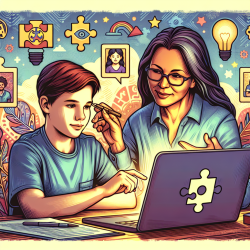As practitioners dedicated to improving outcomes for children with autism, it's crucial to consider their first-person perspectives. A recent study titled Assuming ability of youth with autism: Synthesis of methods capturing the first-person perspectives of children and youth with disabilities provides invaluable insights into methodologies that can effectively capture these perspectives. By integrating these findings into your practice, you can enhance your skills and foster better outcomes for the children you serve.
The study conducted a comprehensive scoping review of 284 articles to identify methods that have been used to capture the first-person perspectives of youth with various disabilities. These methods include:
- Questionnaires
- Interviews
- Group discussions
- Narratives
- Diaries
- Art-based methods
These methods were expressed through four primary communication modalities: language, sign language and gestures, writing, and images. The study also involved a stakeholder consultation with parents of children with autism, who provided additional insights on the applicability of these methods.
Here are some key takeaways for practitioners:
1. Diverse Methods for Diverse Needs
The study highlights the importance of using a variety of methods to capture the perspectives of youth with autism. Each child is unique, and what works for one may not work for another. Offering multiple options ensures that you can tailor your approach to each child's needs and abilities.
2. Importance of Family and Stakeholder Input
Parents and other stakeholders can provide invaluable insights into the best ways to engage with children with autism. Their input can help you choose the most effective methods and create a more inclusive environment for capturing first-person perspectives.
3. Overcoming Communication Barriers
The study identifies common barriers to communication, such as oral communication challenges and cognitive differences. By being aware of these barriers, you can take proactive steps to address them, such as using visual aids or alternative communication methods.
4. Tailoring Approaches
It's essential to tailor your approach based on the child's interests and comfort levels. This can involve creating a safe and comfortable research space, using incentives, and ensuring that the child understands the purpose of their participation.
5. Continuous Learning and Adaptation
The study underscores the importance of continuous learning and adaptation. As new methods and technologies emerge, it's crucial to stay updated and be willing to adapt your approaches to better capture the perspectives of youth with autism.
In conclusion, integrating these findings into your practice can significantly enhance your ability to capture the first-person perspectives of children with autism. This not only leads to better outcomes for the children but also enriches your practice by making it more inclusive and responsive to their needs.
To read the original research paper, please follow this link: Assuming ability of youth with autism: Synthesis of methods capturing the first-person perspectives of children and youth with disabilities.










